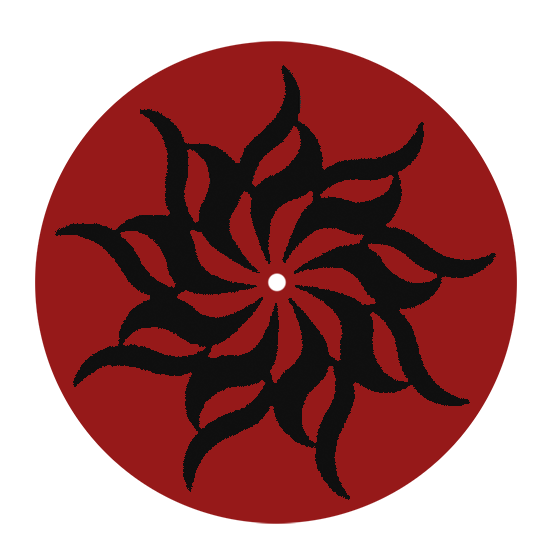Ujjāyī prāṇāyāma (victorious prāṇic control)
Ujjāyī prāṇāyāma is the co-regulation of the breath (ana) and the vital energies (praṇa). When the pelvic floor muscles are slightly contracted and lift up, the abdomen is slightly withdraw toward the spine, the glottis withdraw towards the back of the throat, the chest expands upward and outward (like those of a victorious hero), the tongue rolled upwards and backwards above the soft palate into the nasal cavity (khecarī mudrā) a deep hissing sound (so – सो) is produced at the thyroid level. At the end of inhalation (when the pelvic floor is more contracted and the lungs are fully filled) the exhalation starts with a whispering sound (‘ham – हम्). At the end of exhalation the the stomach is retained slightly withdraw toward the spine ready for the next inhalation. This is called ujjāyī prāṇāyāma and is the technique of prāṇic control applied in the Navakaraṇa Vinyāsa practice.
Do not confused the engagement of the three prāṇic centres (prāṇa-ādhāra-prayoga) achived through the light contraction of the the pelvic floor muscles, the gentle withdraw of the abdomen toward the spine and the contraction and withdraw of the glottis towards the back of the throat with the three locks (bandha-s: mūla bandha, uḍḍiyāna bandha and jālandhara bandha respectively). The gentle contractions required during ujjāyī prāṇāyāma occur throughout the practice. The three bandha-s occur only in specific postures and kriyās and follow different patterns. Further it is very not possible and it is harmful to try to breath during māha-bandha or uḍḍiyāna bandha.
Bhastrika (bellows)
Bhastrika is both a prāṇāyāma and a kriyā- śuddhi (active purification).
When a forceful breath is taken in through both nostrils and expelled forceful through both nostrils a clear sound is produced on the nasal passage and a sudden increase of air is provided to the lungs. The sound produced and the expansion and contraction of the lungs resemble that of the bellow hence it is called bhastrika (bellow). The process can be repeated several times. It can be combined with bandhas. In this case the breath is hold out (bahya kumbhaka – outer retention) after the last exhalation to perform maha bandha for a suitable duration of time. Bhastrika raises the inner body temperature and helps in burning toxins, opening the pranic blockages, clearing the mind from negative thoughts. Bhastrika can be practiced with the right nostril, left nostril, and both nostrils in three stages one after the other. It can also be combined with other kriyā and body movements.
Kapālabhātī (front-lobe splendour)
When a gentle breath is taken rapidly from the the nostril and exhale with a forceful contraction of the abdominal muscles is called kapālabhātī. Kapālabhātī is both a prāṇāyāma and a kriyā- śuddhi (active purification). The process is repeated for a comfortable number of times with passive inhalation. It can be combined with bandhas. It this case it is concluded with a deep and slow inhalation followed by a forceful exhalation (to empty the lungs) then the breath is hold out (bahya kumbhaka – outer retention) and the maha bandha is performed for a suitable duration of time. Kapālabhātī helps to clear the front lobe and lungs, awakes mind and senses and stimulates the digestive system.
Nāḍi śodhana (purification of the pranic channels)
When the breath is taken in slowly through the left nostril (keeping the right nostril closed.) and retained in (āntara kumbhaka – inner retention) for a comfortable period of time (by closing both nostrils and slightly contracting the glottis) and thereafter released through the right nostril (by keeping the left nostril closed) and retained out for a comfortable period of time and then followed by the reversed process is called nāḍi śodhana. The whole process can be repeated a comfortable number of times (cycles), with or without nāsāgra mudrā (right hand with the finger tips of the thumbs and ring-finger touching the nostrils), following various rhythmic pattern (ratio) of inhalation, exhalation and retention of breaths which should be learned in a 1-to-1 setting. When performed without nāsāgra mudrā is called nirālamba (self-supported) anuloma-viloma (“alternate” – lit. natural and opposite direction) nāḍi śuddhi (purification of the pranic channels) prāṇāyāma (prāṇic control). Nāḍi śodhana clears the pranic channels, helps to remove congestion, provides extra supply oxygen and helps in eliminating more efficiently carbon dioxide. It induces tranquility, clears the mind from negative thoughts and prepares for meditational practice.
